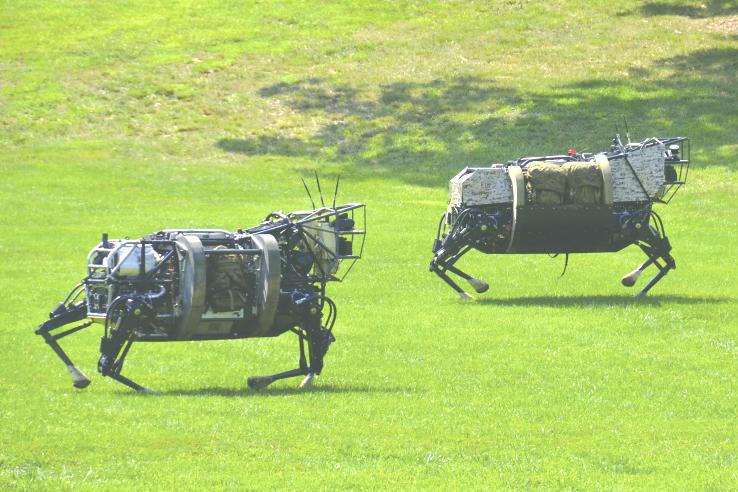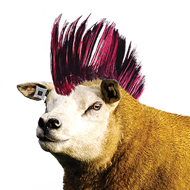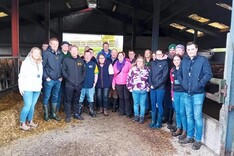A robotic cow has been adapted to produce high-quality milk from grass at minimum cost. The RoboCow is currently being tested on-farm in Meath.
The project was developed on the back of US Department of Defence robotic technology. Driven by issues surrounding greenhouse gas emissions and global food supply concerns, the robotic cow is entirely self-sufficient. Powered primarily by solar panels on its back, gases produced in its synthetic stomach system can also be used to run the cow.
Geneticists from Massachusetts Institute of Technology (MIT) in the US have managed to construct a bio-cell gland system that processes the grass grazed by the RoboCow into milk fit for human consumption.

The cow is built from an ultra-light carbon-based compound which means damage to wet ground is minimised. Spikes that are used to enhance stability also read soil fertility and pH levels, transmitting data directly to the cloud, where it can be interpreted by an app developed in tandem with the RoboCow. Because of its light weight, the RoboCow can also be used to graze wet land and it sends an alert when its sensors detect that the ground is firm enough for conventional grazing.
The robotic cow was initially developed by the US Department of Defence as a support system for marines in combat. Its primary function was to carry heavy equipment across rough terrain and it is capable of following its leader's path through voice recognition and GPS technology. You can see a video of the original military robotic cow in action here.
The updated, demilitarised version on-farm in Fordstown, Co Meath, will have a far more peaceful existence. Rather than seeking to neutralise enemy combatants, its primary function will be to help achieve just below neutral pH levels in the soil and produce top-quality milk.






 This is a subscriber-only article
This is a subscriber-only article











SHARING OPTIONS: